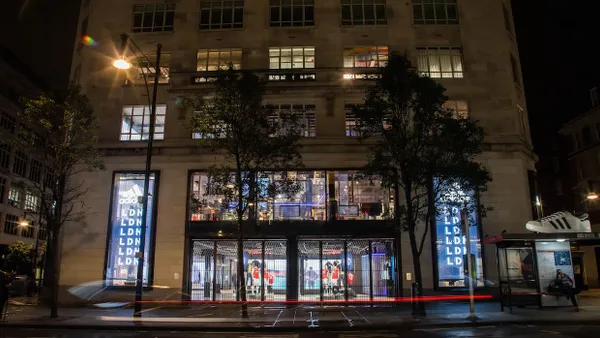Dive Brief:
- Instacart is going to cut hours for its cashiers at Whole Foods stores in New York City and require its existing in-store shoppers handle checkout as well according to Quartz, which obtained an e-mail sent to Instacart employees.
- The change, which becomes effective early next month, comes amid other recent changes on how Instacart is filling orders and getting them to customers, but the company says it is not eliminating the cashier role from its services.
- The Instacart service is available in at least four Whole Foods location in New York City, and according to data from Slice Intelligence earlier this year, the Big Apple is the company's third-largest market.
Dive Insight:
Instacart seems intent on tweaking its entire model, to put it mildly. After initial comparisons to Uber's freelancer-focused approach and a rapid rise in market valuation, the company gradually moved away from using contractors to having its own part-time employees service various functions in the shopping and delivery chain.
That might not be working, as it has recently become apparent that Instacart is revamping its approach in a number of areas. Just last week, Instacart said it had started experimenting with a buy online, pick-up in store (BOPIS) option at a Whole Foods location in New Hampshire. In that case, Instacart eliminated grocery delivery, and made in-store pick-up the only way for Instacart users to retrieve their orders, which is one way to get the Uber hype off your back.
While Instacart says it is not eliminating in-store cashiers, its corporate mindset appears to be on how to consolidate functions and the associated costs of those functions. The company has cast these changes as "refinements," but it looks a little more like Instacart is looking for ways to trim away at an order-purchase-delivery chain that has become too costly and complex to manage effectively. Although the startup also seems to be customizing its approach on a market-by-market (and even store-by-store) basis, which itself could lead to greater management complexity.
Maybe all this tweaking will lead to a more profitable model for Instacart, though there's also a risk that it will prove just plain confusing for customers—as well as for the Instacart representatives who are supposed to be serving them.











